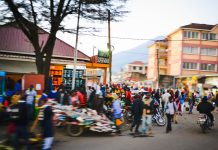According to a 2018 report by the International Energy Agency, sub-Saharan Africa has the lowest energy access rates in the world. About 600 million people lack electricity and 890 million still cook with traditional fuels. This situation continues to impede economic growth and sustainable development.
However, there continues to be increased interest and exploration of solar off-grid and mini-grid solutions to address Africa’s energy access issues. The Africa Energy Forum opened today in Lisbon, Portugal, and a group of 12 leading impact and energy investors with more than $2 Billion under management say well-designed Results-Based Financing (RBF) for mini-grids will accelerate access to electricity for Africa.
The 12 initial investors — Acumen, Blue Haven Initiative, Ceniarth, CrossBoundary Energy Access, DOB Equity, ENGIE Powercorner, Hoegh Capital Partners, KawiSafi Ventures, Renewable Energy Performance Platform (REPP), responsAbility, SunFunder and Triodos Investment Management — have more than $2.0 billion under management, and more than 100 mini-grids built or under development. Others are expected to join the group in the near future.
“We believe mini-grids have a role to play in achieving universal electrification, and we have the types of capital needed for mini-grid financing alongside well-designed RBFs,” the investors said in a public position paper, Unlocking Private Capital for Mini-Grids in Africa. “We stand ready to work with donors and governments to help design effective RBF programs that will unlock our capital.”
The investors added that they had the means to provide the matching private capital that donor and government-backed mini-grid subsidy programs needed in Africa.
“We therefore strongly encourage donors and governments to support effective RBF programs that subsidize rural connections,” the paper said.
According to the International Energy Agency (IEA), mini-grids and other decentralized renewable solutions are the lowest-cost option for bringing electricity to three-quarters of the global population living without energy access. Similarly, McKinsey’s Brighter Africa report found that the benchmark cost for rural grid connections is $2,300 per connection, whereas rural mini-grids serving 100+ connections are typically around $1,000.
With the appropriate policy and finance in place, IEA has estimated up to 200,000 mini-grids are needed, with the potential to meet the energy needs of 450 million people, most of them in Africa.
The group of investors noted that throughout history — in all economies, advanced or emerging — rural electrification has always required subsidy because it serves remote, dispersed customers with higher costs to connect, and because rural households and businesses have much lower incomes than urban customers.
“We believe those subsidies will decline over time as the business model and technology continues to improve with scale, just as they did for wind and solar,” the investors said, adding that achieving universal electrification today is “going to require less subsidy than at any time previously” because new technology and business models emerging from private sector companies are improving the economics.






































